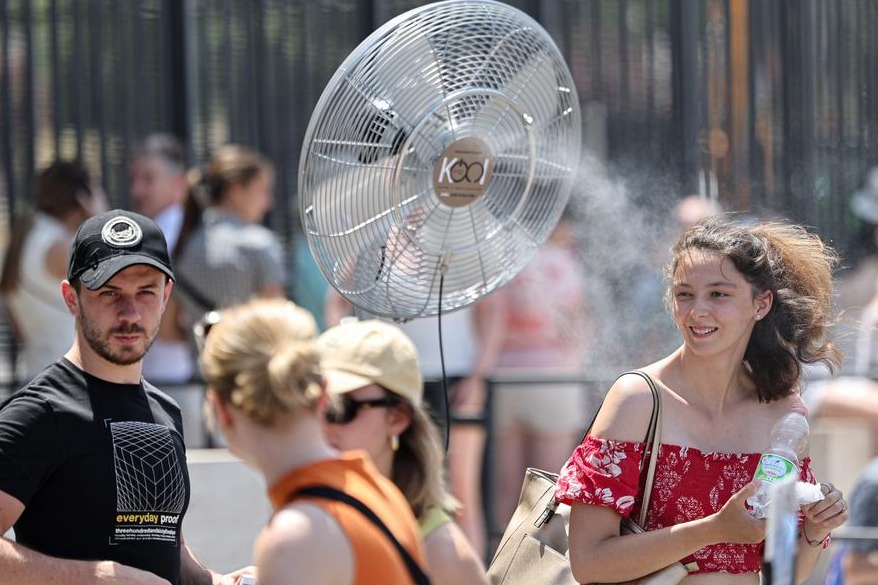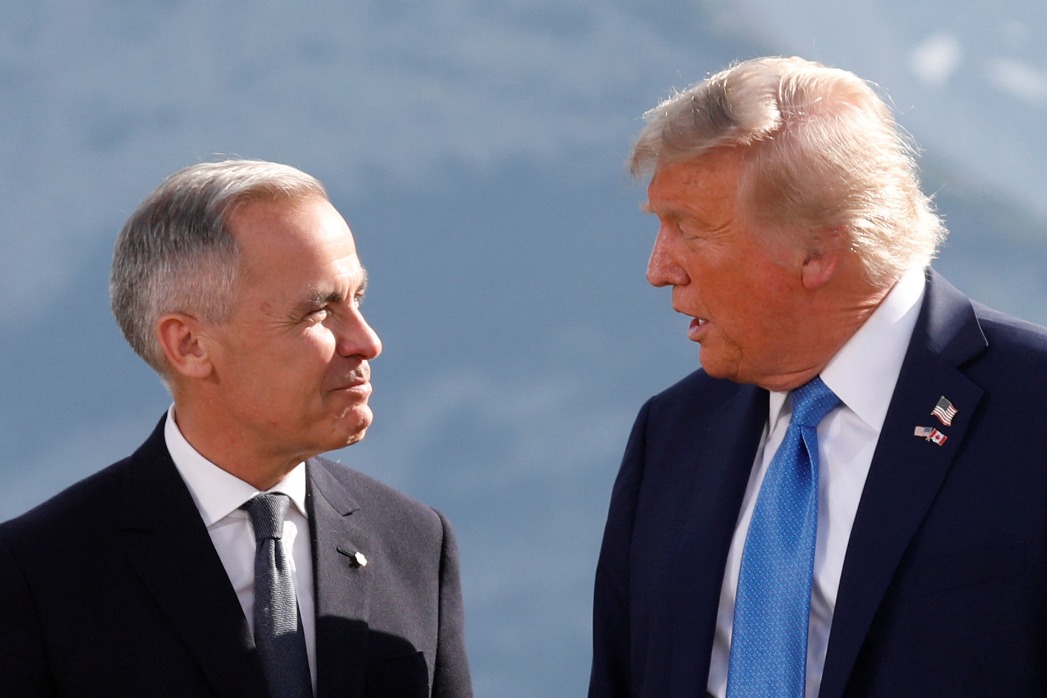India COVID situation improves somewhat


Drop in daily cases spurs hopes the infections peak may have passed, but experts urge caution
A decline in new daily COVID cases in India in the past few days has prompted speculation that the nation's second wave of infections, which has wreaked havoc in many parts of the country, may have crossed its peak.
While there are some encouraging signs, experts caution that the nation is still a long way off from putting the current crisis behind it.
Lav Aggarwal, an official in the federal health ministry, said on May 18 that a total of 199 districts in the country have been showing a continued decline in cases and COVID positivity rates since the last three weeks.
India's total coronavirus cases swept past the 25-million mark on May 18. With 4,529 deaths recorded over a 24-hour period, the COVID fatality count hit a new high that day, as per data released by the health ministry on May 19.
Still, there was a glimmer of hope, as the daily case numbers stood at 267,334, the lowest in 29 days, according to the ministry. On May 17, the number for new COVID cases came in lower than 300,000, the first time the daily count fell below that mark since April 21, the ministry said.
From a peak recorded on May 7, when there were 414,188 new cases, the average number of new cases has decreased by 21 percent, the ministry's data showed. Meanwhile, active cases in the country decreased by more than 165,000 in number on May 18, the biggest dip in weeks.
After crossing the 400,000 mark for the first time on April 30, the daily count of cases has dropped significantly in the last one week. But deaths have continued to rise. The total death count, since the pandemic began last year, stood at more than 287,000 as per data released on May 20.
"The gradual declining figure suggests that India has passed the worst situation. We expect it will go down now," said Raj Kamal Agarwal, a doctor who works at Delhi's Sir Ganga Ram Hospital.
Coronavirus patients have been declining since the past one week, and the hospital where he works has 35 patients in the emergency ward now, whereas the number was more than 75 even ten days ago, Agarwal said.
Interacting with state and district officials on the COVID situation, Prime Minister Narendra Modi said on May 18 that every district in the country is different and has its own unique challenges. Local containment zones, aggressive testing and correct and complete information to the people are the weapons against the virus, he said, stressing the need to be more vigilant.
In light of the recent spike in cases, many local governments in India have imposed strict lockdowns, ordering shutdown of restaurants, bars, shops, commercial establishments, cinema halls and exhibition venues since the last week of April.
Several major states have been under lockdown, as also the national capital, New Delhi.
Superstition, lack of proper treatment and poor health care infrastructure in rural areas have caused the surge in deaths among COVID victims, according to Amitava Nandy, an infectious disease specialist and former head of the Calcutta School of Tropical Medicine.
A major concern among public health experts has been the spread of the virus to rural areas. According to health ministry data, new hot spots have emerged in the northeast part of India where infections continue to surge.
World Health Organization Director-General Tedros Adhanom Ghebreyesus said on May 15 that India remains hugely concerning, with several states continuing to see a worrying number of cases, hospitalizations and deaths.
Many experts surmised that the country would inevitably face further waves of the pandemic. India's principal scientific adviser, K. Vijay Raghavan, has warned that as the virus mutates further, it is necessary to be prepared for the new waves.
Experts suggested that people should continue to follow social distancing, wear masks and take other precautions, and should avoid mass gatherings for the next one year to avoid a possible third wave.
India's health minister, Harsh Vardhan, said on May 19 that the country will procure 2.67 billion COVID vaccine doses by the end of this year, and will be in a position to inoculate at least all of its adult population, according to an official statement.
Several big states in the country have slowed down vaccinations since the last week of April due to short-supply of vaccines from the two Indian manufacturers — Serum Institute of India, and Bharat Biotech. Less than 2 percent of the people in the states of Uttar Pradesh, Madhya Pradesh, Bihar and Jharkhand have been fully vaccinated, health ministry data shows.
The ministry on May 19 accepted the recommendations of an expert group on COVID-19 vaccination, suggesting that those infected with the virus defer their vaccination for three months after recovery.
Meanwhile, there are growing concerns that the recent surge in cases and extended lockdown in major states will adversely affect India's economic recovery.
Data from the Centre for Monitoring Indian Economy, or CMIE, show that overall unemployment rate climbed up to around 8 per cent in April, the highest since December last year. The situation is likely to get worse as more areas have come under lockdown or similar restrictions.
India lost 3.4 million salaried jobs in April, with almost nine million salaried jobs lost over two months from February, according to the CIME.
The second wave has already slowed down growth prospects. According to a recent report released by the Azim Premji University, the pandemic also led to a worsening in quality of employment.
Private forecasters have started downward revisions of their GDP projections for India for 2021.
Manmohan Agarwal, an economist who teaches at the Centre of International Trade and Development at Jawaharlal Nehru University in New Delhi, said it is very clear that India's economy is already affected by the lockdown.
"How long it will be affected depends how long (the lockdown) continues. Employment, overall growth rate, tax collection — everything will go down," he said.
The writer is a freelance journalist for China Daily.

































